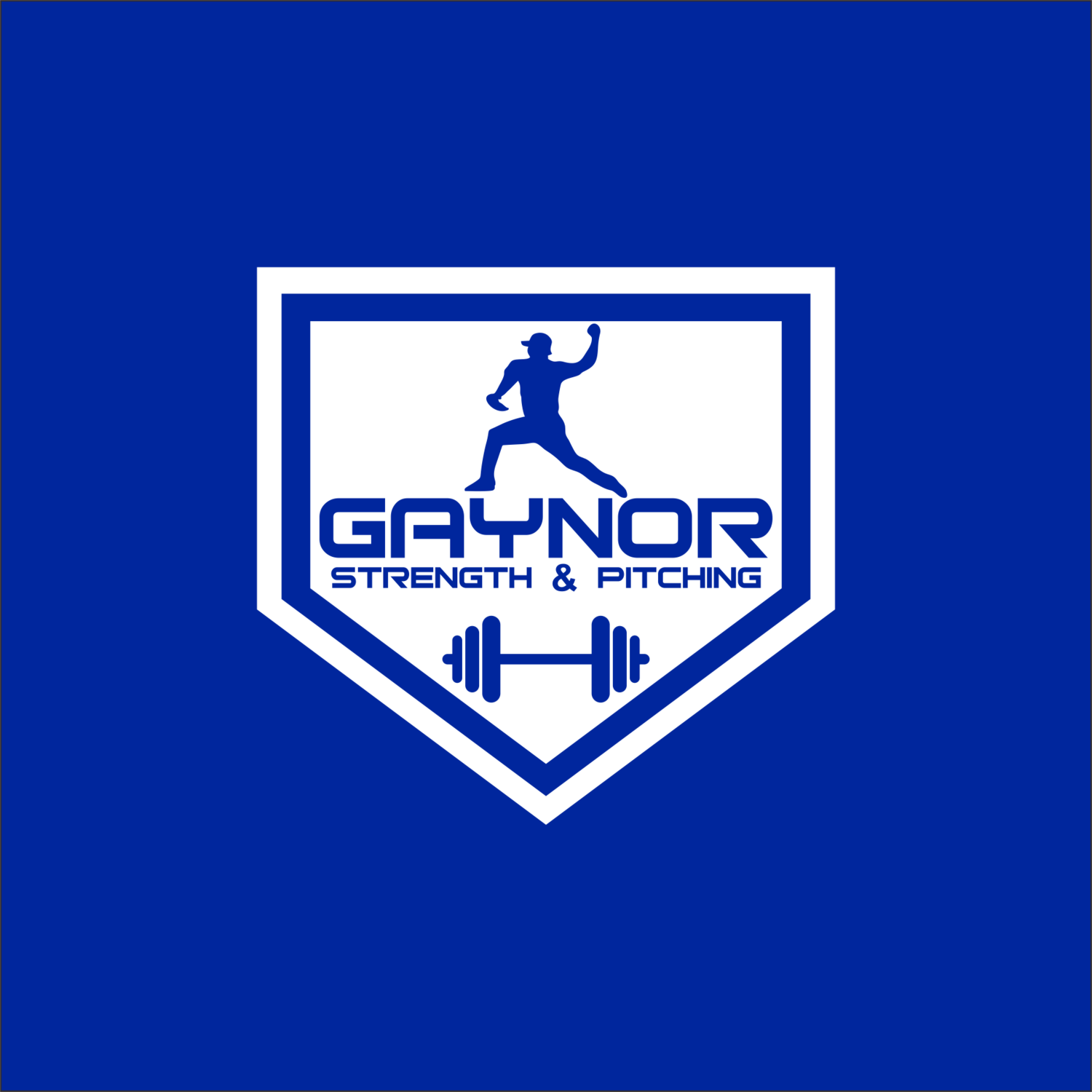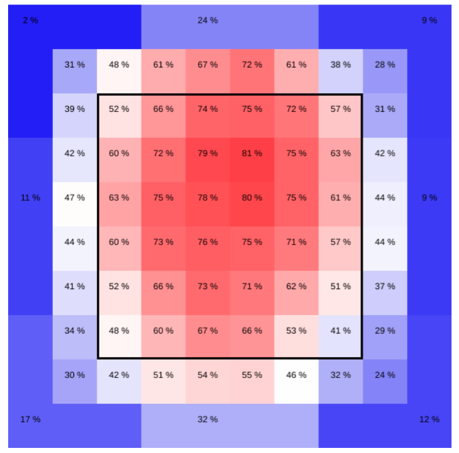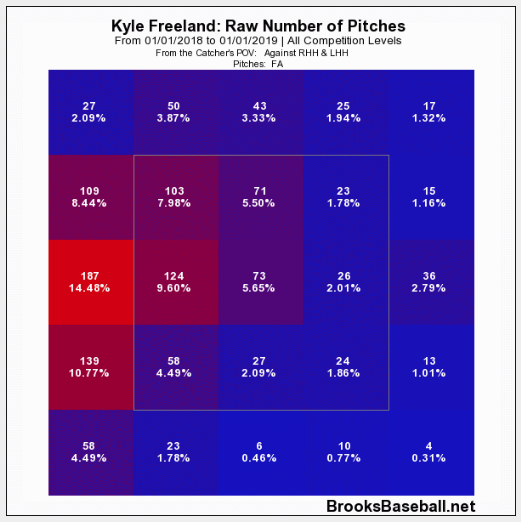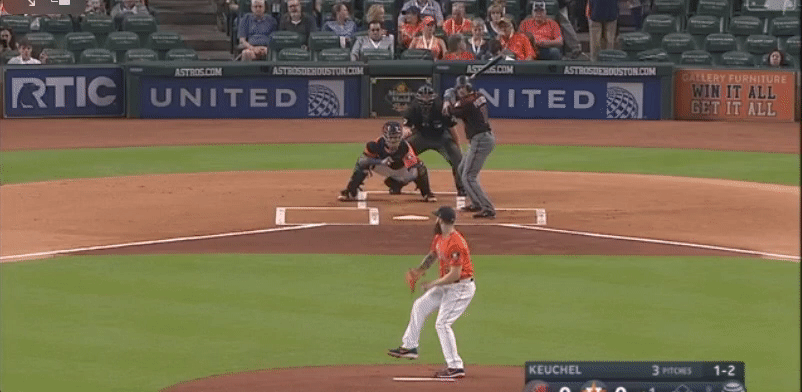In this post I am going to talk about my approach and thoughts on deciding locations for pitches. This isn’t the end all be all, but the majority of the time I tend to have this approach with pitchers I work with. I’ll also be showing zone profiles of a few pitchers to demonstrate my rationale behind my thoughts.
Fastball
My general rule of thumb is to throw the 4-seam glove side and the 2-seam arm side. Typically a 4-seamer is going to be more straight and is going to be a little easier to command to the glove side than the 2-seam. Throwing the 2-seam arm side is going to maximize the movement potential. Not only is it harder to command the 2-seam glove side, but it is also tough to get the same movement as the arm side.
Lets take a look at Kyle Freelands zone profile on his 4-seam vs. 2-seam.
*These are from the catcher’s point of view. Also Freeland is left handed. *
4-Seam Fastball
2-Seam Fastball
As you can see, Freeland is very consistent with throwing the 4-seam glove side and the 2-seam arm side. Of course there will be times where this doesn’t happen, but more times than not you can expect those pitches in those locations.
Change Up
When deciding your change up location it’s important to understand your movement profile. If you are someone that has a lot of horizontal break you might want to run it off the plate. If you are someone with a lot of vertical break then throwing it on top of the plate might be a good idea. Generally speaking, you can’t go wrong throwing your change up down. If you have minimal horizontal movement it will be tough to get swing and misses off the plate because it doesn’t look like a strike at any point.
Marco Estrada is a guy that gets a lot of vertical movement (9.7 inches). Take a look at his zone profile on the change up and a video demonstrating it.
Now lets take a look at a guy that gets a lot of horizontal movement, Dallas Keuchel. Keuchel gets 8.2 inches of horizontal movement on his change up. With this type of movement he can start it on the outer half and let it run off the plate. Let’s take a look at his zone profile and a video of him throwing it.
Curveball
For me, the main key to locating the curveball is keeping it down. Especially if it is a 12-6 curve or close to it, keeping the ball down is key. Clayton Kershaw has a great 12-6 curveball that is his trademark pitch. Take a look at his zone profile on it this past season.
More times than not, Kershaw is keeping his breaking ball down. This is a great pitch to tunnel with a 4-seam up as well because of the similarity in spin appearance and starting on a similar plane. Here is a video of one of Kershaw’s breaking balls.
Slider
More times than not you’ll have a lot of success throwing the slider down and to your glove side. Whether you are facing a lefty or a righty you will have a lot of success with this pitch if you keep it down to glove side. Some guys are able to command it to their arm side, but I see a lot of guys either miss up arm side or have it leak over the plate. To me focusing on one location and mastering it will give you your best chance at succeeding with it. Here is Jacob DeGrom’s zone profile on his slider.
He is extremely consistent with hitting that spot down and to the glove side. Opponents hit just .187 against his slider this year. Below is a video of DeGrom’s devastating slider.
Conclusion
This is my general overview on locating pitches. There are always exceptions and other things you can do with each pitch, but this is my general rule of thumb. The key is to have a plan of attack and to work on maximizing your pitches. Location plays a big part in the success of the pitch. Utilizing each pitch the best you can is key.
Have a question? Send us an email at info@gaynorstrength-pitching.com
- Jared





















Have you ever noticed that you throw almost the same speed at 80-90% effort as you do at…